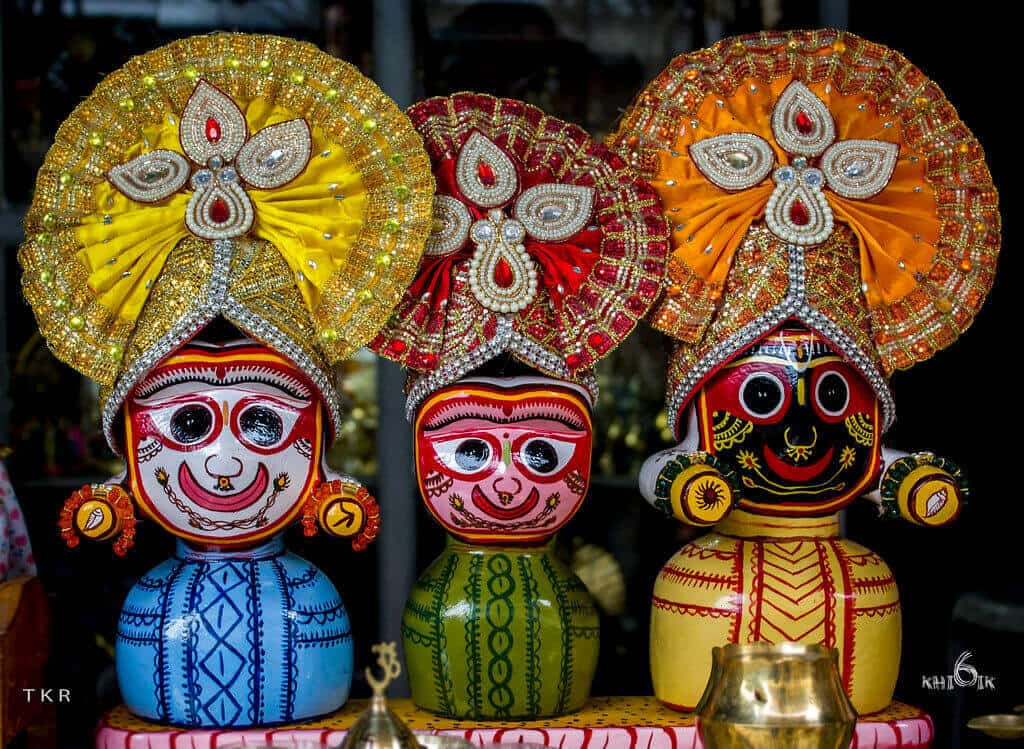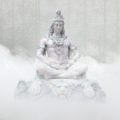Rath Yatra is one of the major Hindu festivals held in India during early June or July. The festival is associated with Lord Jagannath, who is an avatar of Lord Vishnu. Although this festival is celebrated throughout India, the Rath Yatra at Puri is the most famous one. It attracts visitors from around the world who come to witness this spectacle. On this day, the three main deities in the Jagannath temple, namely Jagannath, his brother Balabhadra, and their sister and Subhadra are taken to the streets for everyone to see.
Rath Yatra festival is a symbol of inclusiveness and equality. On this day, even the people who are not usually allowed access to the temple can catch a glimpse of the revered deities during the procession through the streets of Puri. The deities are taken via chariot to the Gundicha temple, which is 2 kilometers away from the Jagannath temple.
Origin of the Rath Yatra Festival
Several stories point to the origin of the Rath Yatra festival. One of them tells that the evil Kamsa, who was Lord Krishna’s maternal uncle, invited Balram and Krishna to Mathura so that he could get rid of them. Kamsa thus sent a chariot to Gokul to bring Krishna and Balram to him. Lord Balram and Lord Krishna climbed onto the chariot and departed for Mathura. This auspicious day is celebrated as Rath Yatra.
Some devotees also consider this to be the day when Lord Krishna defeated the evil Kamsa and appeared in public in Mathura alongside his elder brother Balram. In the city of Dwarka, people believe Rath Yatra is the day when Lord Krishna went on a chariot ride with his siblings Balram and Subhadra to enjoy the beauty of the city.
Another legend goes like this. After Lord Krishna died and was cremated in Dwarka, his elder brother Balaram rushed into the ocean with the partially cremated body of Lord Krishna. Subhadra too followed her brothers and was lost to the ocean. Meanwhile, King Indradyumna of Puri had a dream where he saw Lord Krishna’s body floating up the shores of Puri. He decided to build a huge temple in the city of Puri containing idols of Lord Krishna, Lord Balaram, and Subhadra.
The king managed to find some bone splinters on the coast. He instructed that the remains must be placed within the idol of Lord Krishna. It is said that the architect of heaven, Vishwakarma, arrived in the form of an old man to construct the idols. He gave strict instructions that no one should disturb him while he was working. But many months passed by, and the King was impatient. He opened the door and Vishwakarma instantly vanished. The idols were still incomplete. Taking this as a heavenly sign, the King placed the incomplete idols in the temple.
Before the Rath Yatra Festival
Rath Yatra kicks off with the rebirth ritual ceremony of the deities, which is known as Nabakalebara. During the months of June-July every year, the three deities are taken out in public and bathed in a ritual known as Snana Purnima. 108 pots of water are used to bathe them. For a fortnight after this ritual is complete, Lord Krishna and his siblings are thought to be ill and reside inside a recovery chamber. When the fortnight ends, Lord Krishna and his siblings long for a change of atmosphere and for tasting the good food cooked by their aunt Gundicha. Hence, he and his two siblings ride their chariots to the Gundicha temple on the day of the Rath Yatra.
The Rath Yatra Festival Day
There are many rituals associated with the Rath Yatra in Puri, the chief amongst them being the chhera pahara. This ritual consists of the Gajapati King of Puri wearing a sweeper’s uniform to sweep the area around the chariots and the deities. As the chariots travel onwards, the King sweeps the road in front of them, sprinkling powder and sandalwood water. The custom dictates that although the Gajapati King is considered a revered personality, he still performs this humble task for Lord Jagannath. The ritual eliminates the distinction between the much respected Gajapati King and a commoner.
This ritual is held on the day of the Rath Yatra, as well as for the return journey. On the day of Ratha Yatra, the three deities travel by chariot to the Gundicha temple, where they rest for nine days. After this, they travel back to the Jagannath temple, stopping at the Mausi Maa Temple along the way. Here, a kind of local delicacy known as poda pitha, which is similar to a baked cake, is served to the deities. The chariots of Krishna, Balram, and Subhadra are known as Nandighosa, Taladhwaja, and Dwarpadalana respectively.
Rath Yatra symbolizes Krishna going back to his childhood. Hence, his wife Lakshmi is not present in the scenario, and only his siblings can be seen. Lakshmi is left behind at the temple, and her displeasure is acted out by the priests through rituals. This is done to induce the feeling that like a common man, Lord Jagannath has marital problems too.
The Prasad
This festival is also famous for the Prasad or food prepared during it, which is known as abhada to the locals. The kitchen in the Puri Temple is huge and famous for the food it prepares during the festival. During Rath Yatra, huge pots containing food are placed one on top of the other and then cooked with wood, steam, and fire. This could very well be the biggest pressure cooker in the world.
The Prasad is available for everyone in the market next to the temple, which is known as Anand Bazar. The food is served on banana leaves, and people eat them while sitting on the floor. The meal served to the public consists of dal, khichdi, and vegetables, along with sweets. The sweet dishes are considered special and they include baked rasogolla, poda pitha, as well as a porridge made from date palm jaggery.
Rath Yatra is a festival that is celebrated with much pomp and splendor in India. People from all communities come together on this auspicious day to show their respect for the deities.



